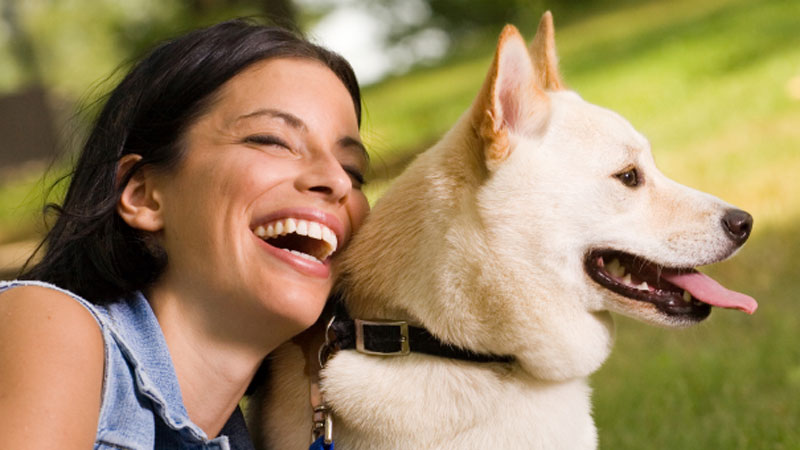Lymphoma
Lymphoma is a cancer of the white blood cells, and after skin cancer, is one of the most common types of cancer we see in dogs. Lymphoma arises from a type of white blood cell called a lymphocyte. These cells are involved in fighting infections and travel all over the body, so lymphoma is often widespread.
It is often first noticed by the owner due to enlarged lymph nodes. Lymph nodes are part of the lymphatic system and are located all over the body. The easiest ones to feel are the submandibular lymph nodes below the jaw, prescapular lymph nodes near the shoulder or popliteal lymph nodes behind the knee. Other symptoms include lethargy, weight loss, reduced appetite, and increased thirst. Enlarged lymph nodes in the throat may cause problems swallowing. Swollen nodes in the chest cavity may cause a cough.
Lymphoma is suspected if all or some of these lymph nodes are enlarged and diagnosis is confirmed with a lymph node biopsy. This is a minor surgical procedure performed under general anaesthesia. The lymph node sample is sent to a lab for examination by a specialist under a microscope. Once lymphoma is diagnosed then further tests are performed to assess the general health of the dog by blood tests and a chest X-ray and abdominal ultrasound to help identify the extent of enlarged lymph nodes internally.
Lymphoma can be treated but rarely cured so the dog will go into remission. The average survival time without any treatment is 2 months however this varies with the type of lymphoma and extent of the disease at diagnosis. With chemotherapy this can be extended to 1-2 years. The aim of chemotherapy in dogs is very different to how it is used in humans. It is used at much lower doses, so side effects are kept to a minimum and the dog maintains a good quality of life.
Some owners may opt to just treat their pet with steroids (prednisolone). As a sole drug it will often increase survival times by 1-3 months . However, it does not work in all cases and will reduce efficacy of any future chemotherapy protocols. It will usually make the dog feel a lot better and the only major side effect is an increased thirst when used short term.
Chemotherapy works by stopping or hindering the growth of cancer cells. Chemotherapy regimens vary but the most common is a COP or CHOP protocol. This involves using a combination of oral prednisolone and cyclophosphamide and injectable vincristine and/or doxorubicin. The steroids are given at home by the owner either daily or every other day. The cyclophosphamide is a tablet administered by the practice, usually every 3 weeks. The vincristine and doxorubicin are given intravenously by the veterinary surgeon every 1-3 weeks depending on stage and type of protocol being used.
Side effects occur because chemotherapy drugs damage normal body cells as well as cancer cells. They work by stopping rapidly dividing cells, consequently normal cells that divide rapidly are more susceptible. These include blood cells, intestinal cells, and hair follicles. Hair loss is not as prevalent in dogs as in humans but breeds with a continuously growing coat such as poodles are more commonly affected. Attack of intestinal cells can cause vomiting and/or diarrhoea. Damage to blood cells mainly results in immune suppression so reducing the ability of the dog to fight infections. Dogs have regular blood tests for haematology to assess whether their white blood cells are too low then they can be put on antibiotics and/or have the next dose of chemotherapy postponed.
Steroids are used in combination with chemotherapy treatments to make the dog feel better and improve appetite. Inevitably the cancer cells will become resistant to the chemotherapy drugs at some point so the dog will come out of remission. Euthanasia is often required when quality of life deteriorates.


